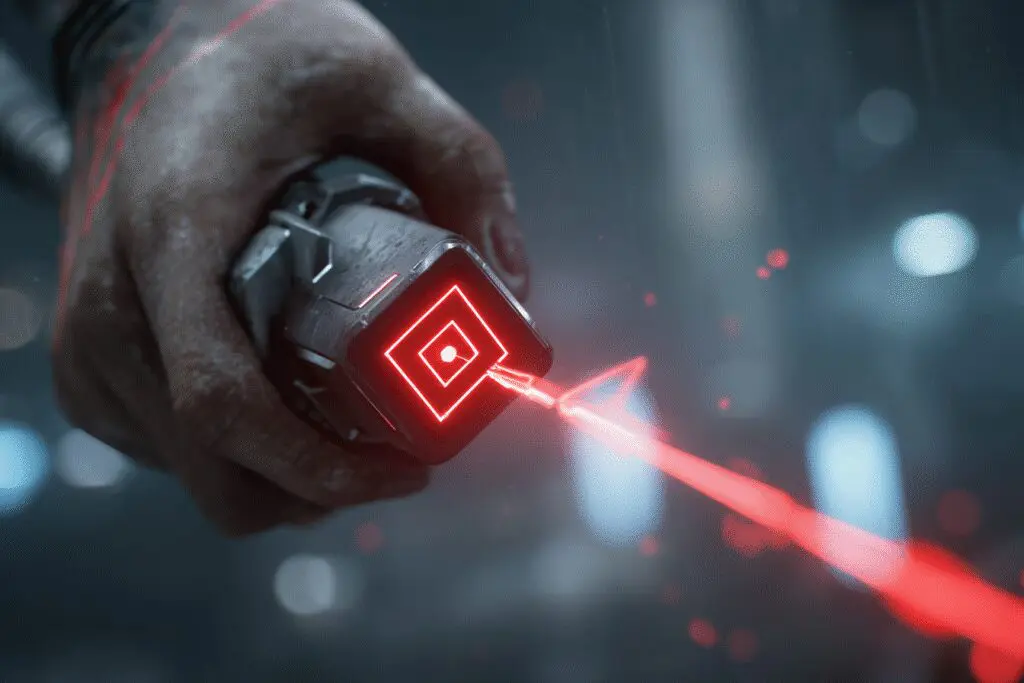Did you know that the average price of a new high-end graphics card can often exceed the cost of an entire gaming console? It’s a staggering thought, especially when the latest blockbuster games demand more and more graphical horsepower. For years, PC gamers faced a tough choice: shell out a small fortune for the latest hardware or get left behind, struggling with choppy frame rates. But what if there was a third option? A free software trick that could breathe new life into your existing GPU? That, in essence, is the answer to the question, “What is FSR gaming?”
It’s a technology from AMD that gives you a significant performance boost in your favorite games, often with just the flip of a switch in the settings menu.
I remember staring at my screen, frustrated. I was trying to run a brand-new title on my trusty but aging graphics card, and the slideshow-like performance was just painful. The idea of spending hundreds of dollars on an upgrade felt completely out of reach. Discovering FSR felt like finding a secret cheat code, one that didn’t just give me an in-game advantage, but made the game playable in the first place.
More in Graphics Optimization Category
What Is Ray Tracing in NVIDIA GPUs
How to Update AMD Radeon Drivers
Why Do Gamers Even Need Something Like FSR?
Modern video games are breathtakingly beautiful. They immerse us in hyper-realistic worlds with stunning lighting effects like ray tracing, all rendered at incredibly sharp resolutions like 1440p and 4K. However, this visual fidelity comes at a steep price: performance. Every single pixel on your screen has to be calculated and drawn by your Graphics Processing Unit (GPU), and when you have millions of them, your GPU can quickly become overwhelmed.
This creates a performance bottleneck. Your powerful processor and fast RAM might be ready to go, but if the GPU can’t keep up with the visual demand, your frame rate plummets. A low frame rate, measured in Frames Per Second (FPS), results in a stuttery, unresponsive gaming experience. For a long time, the only solution was to either lower the game’s resolution, making it look blurry and dated, or to buy a more powerful, and therefore more expensive, GPU. This is precisely the problem that technologies like AMD FidelityFX Super Resolution (FSR) were designed to solve.
So, How Does AMD FSR Actually Work Its Magic?
At its core, FSR is a clever upscaling technology. In simple terms, it tells your GPU to draw the game at a lower resolution than your monitor’s native resolution. For instance, if you have a 4K (3840×2160) monitor, FSR might render the game internally at 1440p (2560×1440). Then, a sophisticated algorithm takes that lower-resolution image and intelligently scales it up to fit your 4K screen, sharpening it and reconstructing details to make it look as close to native 4K as possible.
Think of it like a talented artist working on a digital painting. Instead of painting every single tiny detail on a massive canvas from the start, they might create a high-quality, smaller version first. Then, they use their skills and advanced tools to enlarge the painting, carefully adding and refining details so the final, large-scale piece looks sharp and clear. FSR does something similar, but it does it 60 times a second. The result is that your GPU has much less work to do, freeing it up to produce significantly higher frame rates.
Is FSR Just Lowering the Resolution?
This is a common misconception. While the process starts by rendering at a lower resolution, it’s the “super” part of Super Resolution that makes all the difference. Simply stretching a low-resolution image would result in a blurry, pixelated mess. FSR employs advanced spatial and temporal algorithms to analyze the image, detect edges, and reconstruct fine details during the upscaling process. It’s not just making the picture bigger; it’s intelligently rebuilding it at a higher resolution.
What’s the Huge Difference Between FSR 1.0 and FSR 2.0?
When FSR first launched, it was a game-changer, but the technology has evolved significantly. Understanding the difference between the versions is key to appreciating how far it has come.
- FSR 1.0 (Spatial Upscaling): This initial version was a spatial upscaler. This means its algorithm looked at only a single, static frame to perform the upscale and sharpening. It was incredibly effective at boosting performance and, most importantly, it worked on a massive range of GPUs from all manufacturers. The downside was that because it lacked data from previous frames, the upscaled image could sometimes look a little soft or lose some very fine texture detail compared to native resolution.
- FSR 2.0 and Beyond (Temporal Upscaling): This was a monumental leap forward. FSR 2.0 is a temporal upscaler, which means it uses data not just from the current frame, but from previous frames as well. By analyzing motion vectors (data that shows how objects are moving across the screen), it can reconstruct a much more detailed and accurate image. This results in image quality that is dramatically better than FSR 1.0 and often gets incredibly close to native resolution. I remember trying the original FSR in a shooter and thinking it was decent, but when a patch added FSR 2.0 support, the difference in clarity was staggering. The fine details on distant objects were suddenly visible again.
What Are the Different FSR Quality Modes and Which One Should I Use?
To give you control over the balance between image quality and performance, FSR provides several different modes. The names are quite intuitive, but here’s a breakdown of what they do and when you might want to use them.
The game renders at a specific percentage of your target resolution, and the lower that percentage, the bigger the performance boost you’ll see.
- Quality (or Ultra Quality in some games): This mode renders the game at the highest internal resolution (around 67% to 77% of native). It provides the best possible image quality, looking very close to native resolution, while still giving you a noticeable performance uplift. This is the perfect mode to use when your game is already running pretty well, and you just want a solid, stable frame rate without sacrificing visual fidelity.
- Balanced: As the name suggests, this mode offers a great middle ground. It renders at a slightly lower internal resolution (around 59% of native), giving you a more substantial performance boost than Quality mode. The image quality is still excellent, and for me, this is often the sweet spot. It’s my go-to setting for most single-player, story-driven games where I want both smooth performance and beautiful graphics.
- Performance: Now we’re talking about a serious FPS increase. Performance mode renders at 50% of your native resolution. This is where you might start to notice some softness in the image compared to native, but the trade-off is a massive gain in frame rates. This mode is fantastic for high-refresh-rate competitive gaming where every frame counts, or for gamers using older hardware who need a big boost to run a demanding new title.
- Ultra Performance: This is the nuclear option. Rendering at an even lower internal resolution (around 33% of native), this mode delivers the maximum possible frame rate boost. However, the image quality takes a significant hit and can appear quite blurry or shimmery, especially at lower screen resolutions like 1080p. This mode is primarily designed for making games playable at extreme resolutions like 8K, or as a last resort for very underpowered systems.
Experimentation is key. What looks good to you on your specific monitor and in your favorite game might be different for someone else. Start with “Quality” or “Balanced” and see how it feels.
What Do I Need to Use FSR in My Games?
This is arguably FSR’s greatest strength and what truly sets it apart from its main competitor. Because AMD made FSR an open-source technology, its hardware requirements are incredibly flexible.
Does FSR Only Work on AMD Graphics Cards?
Absolutely not! This is the most important thing to know about FSR. Unlike NVIDIA’s DLSS, which requires a specific NVIDIA RTX graphics card, AMD FSR works on almost any modern GPU.
This includes:
- AMD Radeon GPUs (from the RX 400 series onwards)
- NVIDIA GeForce GPUs (from the GTX 10 series onwards)
- Even Intel’s new Arc GPUs
This open approach is incredibly pro-consumer. My friend is still happily gaming on his old NVIDIA GTX 1060, a card that doesn’t support DLSS. He thought he was completely locked out of modern upscaling tech until I walked him through turning on FSR in a few of his games. It gave his beloved card a whole new lease on life, allowing him to enjoy newer titles at playable frame rates without having to buy new hardware.
How Do I Know If a Game Supports FSR?
Support for FSR needs to be implemented by the game developers themselves. Thankfully, the list of supported titles has grown exponentially and now includes hundreds of games, from huge AAA releases to small indie gems.
The easiest way to check is to simply go into your game’s graphics or display settings menu. You will usually find the AMD FidelityFX Super Resolution option alongside other settings like resolution, texture quality, and anti-aliasing. If it’s there, all you need to do is turn it on and select your preferred quality mode.
Is AMD FSR Better Than NVIDIA DLSS?
This is the big question in the world of PC graphics: FSR vs. DLSS. The truth is, there isn’t a simple answer, as they both have distinct advantages. It’s less about which one is “better” and more about which one is right for you.
NVIDIA’s Deep Learning Super Sampling (DLSS) uses artificial intelligence and dedicated hardware (Tensor Cores) found only on their RTX series of GPUs to perform its upscaling. This specialized approach means that, in many direct comparisons, DLSS can produce a slightly sharper and more stable image, especially at lower performance modes.
However, the comparison breaks down into a few key areas:
- Image Quality: In the latest versions (FSR 2.2+ vs. DLSS 2+), the image quality is fiercely competitive. While some experts might give a slight edge to DLSS in certain scenarios, FSR has become so good that for the average gamer, the difference is often negligible during actual gameplay.
- Performance: Both technologies provide massive performance boosts, often doubling frame rates or more in the most aggressive modes. The exact performance gain varies by game, hardware, and settings, but both are exceptionally effective.
- Compatibility: This is where FSR wins, hands down. Its open, hardware-agnostic nature means millions more gamers can benefit from it. DLSS is a fantastic technology, but it’s an exclusive feature for those who have invested in a specific brand of GPU.
I like to think of it this way: DLSS is like a highly specialized, precision tool made for one specific job, and it does that job exceptionally well. FSR, on the other hand, is like an incredible, high-quality universal multi-tool. It can do almost the same job just as effectively in most situations, but you can also share it with all of your friends, regardless of what tools they own.
What About the New FSR 3 with Frame Generation?
The latest evolution of the technology is FSR 3, which introduces a groundbreaking feature called AMD Fluid Motion Frames (AFMF), also known as frame generation. This technology goes a step beyond upscaling.
After a frame has been rendered and upscaled, FSR 3 looks at two consecutive frames, analyzes the motion data, and then generates an entirely new, intermediate frame to insert between them. For example, if your GPU renders a frame and then another, FSR 3 will create a new one to stick in the middle. This can have a dramatic effect on your perceived frame rate, sometimes nearly doubling it on top of the boost you already get from upscaling.
The main consideration with any frame generation technology (both AMD’s and NVIDIA’s) is a slight increase in input latency. Because the system has to wait for two frames to generate a new one, there’s a tiny delay between when you move your mouse and when you see the result on screen. For this reason, frame generation is often best suited for single-player games where split-second reflexes are less critical.
What Does the Future of FSR Gaming Look Like?
Upscaling technology is no longer just a neat trick; it’s a fundamental pillar of modern PC gaming. It’s the key that unlocks next-generation gaming experiences for a much wider audience. As games become more complex, with technologies like full path tracing demanding immense computational power, upscalers like FSR will be essential to making them playable at acceptable frame rates.
It democratizes PC gaming, ensuring you don’t need a top-of-the-line, $1500 GPU to enjoy the latest and greatest titles. It extends the useful life of older hardware, which is not only good for our wallets but also better for the environment. For those who want to dive into the deep academic principles behind these graphical marvels, university courses in computer graphics, like those offered at major tech institutions such as Stanford University, cover the foundational concepts of real-time rendering that make technologies like FSR possible.
So, the next time you boot up a new game and find yourself wishing for a smoother experience, don’t immediately look at your wallet. First, look in the settings menu. Don’t just scroll past that “FidelityFX Super Resolution” option. Turn it on. Cycle through the modes and find the one that works for you. You might be shocked to discover that the performance you’ve been dreaming of was just a click away, waiting to be unlocked for free.
Frequently Asked Questions – What Is FSR Gaming

How can I enable and choose FSR modes in games?
To use FSR, open a game that supports it, go to the graphics settings, find the upscaling or FidelityFX Super Resolution option, and turn it on. You can then select from various modes like Quality, Balanced, or Performance, depending on your desired balance of image quality and frame rate.
Why is FSR considered more compatible than NVIDIA’s DLSS?
Because FSR is open-source, it works on a wide range of graphics cards from different manufacturers, including AMD, NVIDIA, and Intel, and can be used with older GPU models. DLSS, in contrast, requires specific hardware only available in NVIDIA RTX graphics cards.
What are the main versions of FSR and how have they evolved?
The initial FSR 1.0 used spatial upscaling based on single frames, while FSR 2.0 introduced temporal upscaling by incorporating data from previous frames for better detail and stability. FSR 3 added Frame Generation to create additional frames for even smoother performance, and future versions plan to integrate AI for further improvements.
How does FSR improve gaming performance without sacrificing quality?
FSR works by rendering a game at a lower resolution and then using advanced upscaling techniques to produce an image that appears as detailed as a higher-resolution one, saving the GPU work and increasing frame rates for smoother gameplay.
What is AMD FidelityFX Super Resolution (FSR)?
AMD FidelityFX Super Resolution (FSR) is a technology designed to boost gaming performance by making images appear sharper and larger without requiring more powerful hardware. It helps games run smoother at higher resolutions by intelligently upscaling lower-resolution images.




